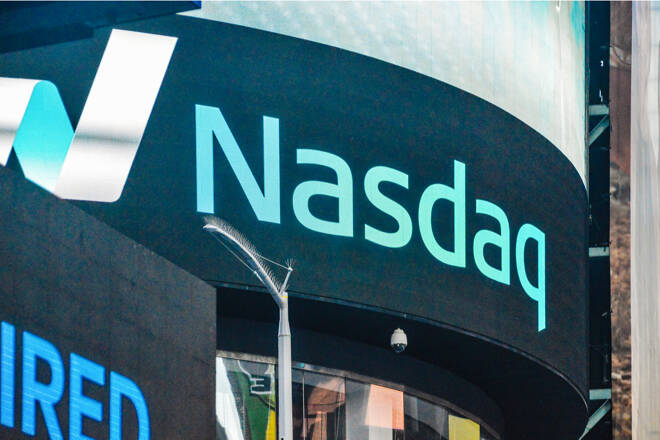Advertisement
Advertisement
Nasdaq Composite Posts Strong Quarterly Gain Led by Tech Sector
By:
The Nasdaq Composite saw its largest quarterly percentage increase since June 2020, rising 16.8% in Q1 2023.
Highlights
- Nasdaq Composite up 16.8%, S&P 500 up 7%, Dow up 0.4% in Q1 2023
- S&P 500 financial sector down 6.1%, tech sector up 21.5%
- Semiconductors strong performer, U.S. Treasury yields ease, Fed may hold off rate hike
Nasdaq Composite Surge Led by Tech Sector
The Nasdaq Composite experienced its largest quarterly percentage increase since June 2020, gaining 16.8% during the first quarter of 2023.
The S&P 500 gained 7% and the Dow rose 0.4% during the same period, despite a sharp sell-off in bank stocks following the collapse of two regional banks earlier in the month.
The S&P 500 financial sector experienced a 6.1% drop, making it the worst-performing sector of the quarter, while the technology sector’s 21.5% rise led the gains for the S&P 500.
Semiconductors were among the quarter’s strongest-performing stocks, with the Philadelphia semiconductor index rising 27.6%.
Shares of big tech gained as investors rotated out of banks and as U.S. Treasury yields eased, with the two-year note yield posting its largest monthly drop since 2008.
May Rate Hike Expectations Dip
The market received a boost on Friday after the core Personal Consumption Expenditures index, the Fed’s preferred inflation gauge, showed a cooler-than-expected increase in prices.
The Fed has been raising rates to cool inflation, and expectations for a 25 basis point rate hike at its May meeting dipped to about 50%, with no hike seen as just as likely.
The Commerce Department report on Friday showed that U.S. consumer spending rose moderately in February while inflation cooled.
Boston Fed President Susan Collins also said on Friday that maintaining a certain level of rate rises will be critical in helping to lower high inflation back to the 2% target.
NASDAQ Rises Despite Below Average Trading Volume
Volume on U.S. exchanges was 11.98 billion shares, compared with the 12.74 billion full-session average over the last 20 trading days.
Advancing issues outnumbered decliners on the NYSE by a 4.78-to-1 ratio and on Nasdaq, a 2.45-to-1 ratio favored advancers.
The market ended on a high note, with the technology sector leading the way, despite the rocky quarter that saw more Federal Reserve rate tightening and a mini-financial panic spurred on by the collapse of Silicon Valley Bank.
For a look at all of today’s economic events, check out our economic calendar.
About the Author
James Hyerczykauthor
James Hyerczyk is a U.S. based seasoned technical analyst and educator with over 40 years of experience in market analysis and trading, specializing in chart patterns and price movement. He is the author of two books on technical analysis and has a background in both futures and stock markets.
Did you find this article useful?
Latest news and analysis
Advertisement
